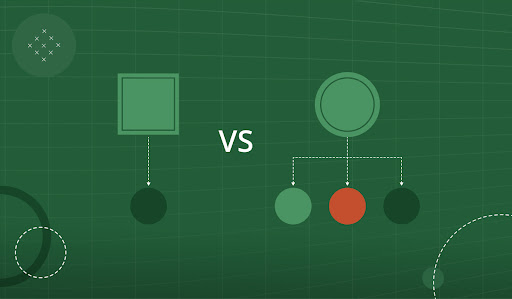Joint Probability: What Is It, Formula, Example and Why It Is Important
What Is Joint Probability?
In finance, you need to know the probability of two (or more) events—affecting your company—occurring at the same time. This is the probability analysis of scenario modeling and scenario planning. “What’s the probability of both A and B happening at the same time?”
What Is the Joint Probability Formula?
P (A⋂B)
where:
A, B = Two different events that intersect
P(A and B), P(AB) = The joint probability of A and B
For example, you roll two six-sided dice.
What’s the joint probability of rolling a 1 on the first die and a 4 on the second die?
The probability of rolling a 1 on the first is 0.167 (1/6).
The probability of rolling a 4 on the second is 0.167 (1/6).
The joint probability is 0.027 (1/36).
Now, if you start over, and roll three six-sided dice, what’s the joint probability of rolling a 5 on all three?
The probability of rolling a 5 on the first is 0.167 (1/6). The probability of rolling a 5 on the second is 0.167 (1/6). The probability of rolling a 5 on the third is 0.167 (1/6).
The joint probability is 0.005 (1/216).
Joint probability is quantified between 0 and 1. In each of these examples, your dice are rolled simultaneously, and the result of each roll isn’t conditional on your other roll(s). You’d follow the same if you’d roll four or more dice, or if you’d rolled dice that had eight sides etc. When calculating your joint probability, the number of events you can include is unlimited.
Analyze your joint probabilities with this free what-if analysis template for Excel.
Why Is Joint Probability Important?
What’s the joint probability of your company’s product development team reaching 85% of their hiring goal and the sales team reaching 95% of their sales target? Let’s assume those events don’t depend on each other. Effective scenario planning includes calculating how—should those two scenarios occur—would affect your business’s bottom line?
What Is The Difference Between Joint Probability and Conditional Probability
They’re similar. While joint probability calculates the probability of multiple independent events occurring simultaneously, conditional probability is the statistical likelihood of dependent events—one event occurring after another only if the previous event(s) occur.
The formula to calculate conditional probability is P(A, given B) or P(A∣B).
Recommended Resources

How To Use the Scenario Planning Process To Navigate Business Uncertainties
Learn More
The Ultimate Guide to Scenario Planning
Learn More